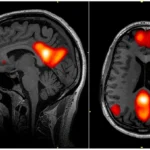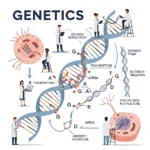Revolutionary power of Neuromorphic Engineering in Artificial Intelligence
Neuromorphic engineering is a multidisciplinary area focused on creating artificial neural systems, drawing on principles from neuroscience, mathematics, computer science, and electrical engineering.

What is Neuromorphic Engineering?
Neuromorphic Engineering is the creation of artificial neural systems that imitate the functions of biological nervous systems. The objective is to develop hardware and software that can process information in a way similar to the human brain, leading to more efficient and adaptable computing systems capable of learning from experiences. This technology has the potential to tackle complex problems that traditional computing platforms find challenging, such as pattern recognition, sensory processing, and decision-making in uncertain environments. Communication between neurons in many neuromorphic systems is often achieved using spikes or pulses, resembling the way biological neurons communicate.
Understanding the Basics of Neuromorphic Engineering
Neuromorphic engineering focuses on replicating the intricate functioning of biological neural networks to process information akin to the human brain.
Key elements in this realm include the development of systems that mimic neural networks and synaptic connections. These architectures allow for parallel processing, enabling simultaneous data processing similar to the human brain’s operations.

In addition to their exceptional intelligence, neuromorphic machines are also remarkably energy-efficient, the performing fundamental computations principle on of low neuromorphic power. engineering These is machines to are construct equipped models with that built-in mimic fault the tolerance operational capabilities, mechanisms enabling of them biological to neural continue networks functioning and even analyse in data the akin event to of the component human failures brain.
Below are crucial facets of this domain:
1. It designs systems that simulate neural networks and synaptic connections.
2. The neuromorphic structures and networks engage in concurrent processing. This enables them to handle numerous data simultaneously, mirroring the brain’s functionality.
3. Besides exhibiting exceptional intelligence, they also operate on minimal power, showcasing energy efficiency.
4. Neuromorphic devices boast built-in resilience to faults. They possess the ability to sustain operations even in the event of component failures.

Applications of Neuromorphic Engineering
The realm of neuromorphic engineering presents promising opportunities in various sectors, as elucidated below.
One significant area is brain-computer interfaces, where neuromorphic systems excel in swiftly processing neural signals compared to conventional computers. This proficiency makes them ideal for facilitating interactions between individuals with paralysis and prosthetic limbs or enabling oral communication.
Another field of application is in robotics and autonomous systems, where neuromorphic systems offer The superior utilisation control of capabilities neuromorphic over technology traditional holds computer immense systems. potential These across systems a can range swiftly of analyze sectors, stimuli, as make detailed real-time below.
Decisions Advanced akin Brain-Computer to Connections
Neuromorphic biological systems systems, boast and unparalleled navigate speed complex in and processing uncertain neural environments. data, This surpassing makes conventional them computers. particularly This advantageous makes for them robots ideal operating for in enhancing such brain-computer challenging interfaces. settings. Such interfaces have the power to enable individuals with paralysis to effortlessly control prosthetic limbs or communicate verbally.
Cutting-edge Robotics and Autonomous Operations
The adaptability of neuromorphic systems makes them superior to traditional computer controls in managing robots. By swiftly analyzing stimuli and making real-time decisions akin to biological processes, these systems excel in signal recognition and adjustment. Consequently, they are Neuromorphic invaluable technology for holds robots immense designed potential to across navigate various complex domains, and as unpredictable detailed environments.
Advancements in Brain-Computer Interfaces
Neuromorphic systems boast enhanced speed in processing neural signals, surpassing conventional computers. This makes them ideal for brain-computer interfaces, potentially enabling individuals with paralysis to effortlessly control prosthetic limbs or communicate verbally.
Revolutionizing Robotics and Autonomous Systems
Neuromorphic systems offer superior control over robots compared to traditional computer methods. By analyzing stimuli instantaneously and mimicking the decision-making process of biological systems during signal recognition and modulation, these systems prove exceedingly useful for robots operating in intricate and unpredictable
Optimization problems
Neuromorphic systems can perform some optimization problems faster than the standard CPU. Moreover, these systems are designed to have parallel structures and can effectively deal with uncertainty making their application appropriate for scheduling and resource allocation.
Pattern recognition
Neuromorphic systems are best suited to work on pattern recognition. They can analyse enormous amounts of information, received through sensory organs, in a short amount of time. This capability makes them applicable for instances such as image and speech recognition.

Future Directions in Neuromorphic Research
The field of neuromorphic engineering is rapidly evolving, with numerous potential paths for exploration:
Researchers are actively pursuing innovative solutions to enhance the scalability of neuromorphic systems. They are working on advanced artificial neural networks (ANNs) that closely mimic the structure of biological neurons, leading to more powerful and refined systems.
The development of Spiking Neural Networks (SNNs) is a crucial focus in neuromorphic engineering. In the future, we can anticipate the emergence of faster and more accurate learning algorithms for SNNs.
Material research for neuromorphic hardware is a key area of advancement. We can look forward to the discovery of new materials and fabrication techniques for neuromorphic chips and associated technologies.
The integration of neuromorphic models with traditional computing architectures holds immense potential. By combining the strengths of both approaches, we can create more robust systems. Additionally, incorporating traditional AI and machine learning algorithms will enable neuromorphic systems to tackle even more complex tasks
What’s Next for Neuromorphic Engineering?
The field of neuromorphic engineering is rapidly changing. Future developments may include more powerful and efficient neuromorphic technology, improved learning algorithms, and novel applications. As our understanding of the brain improves and technology advances, neuromorphic systems may play an increasingly important role in computing and artificial intelligence






